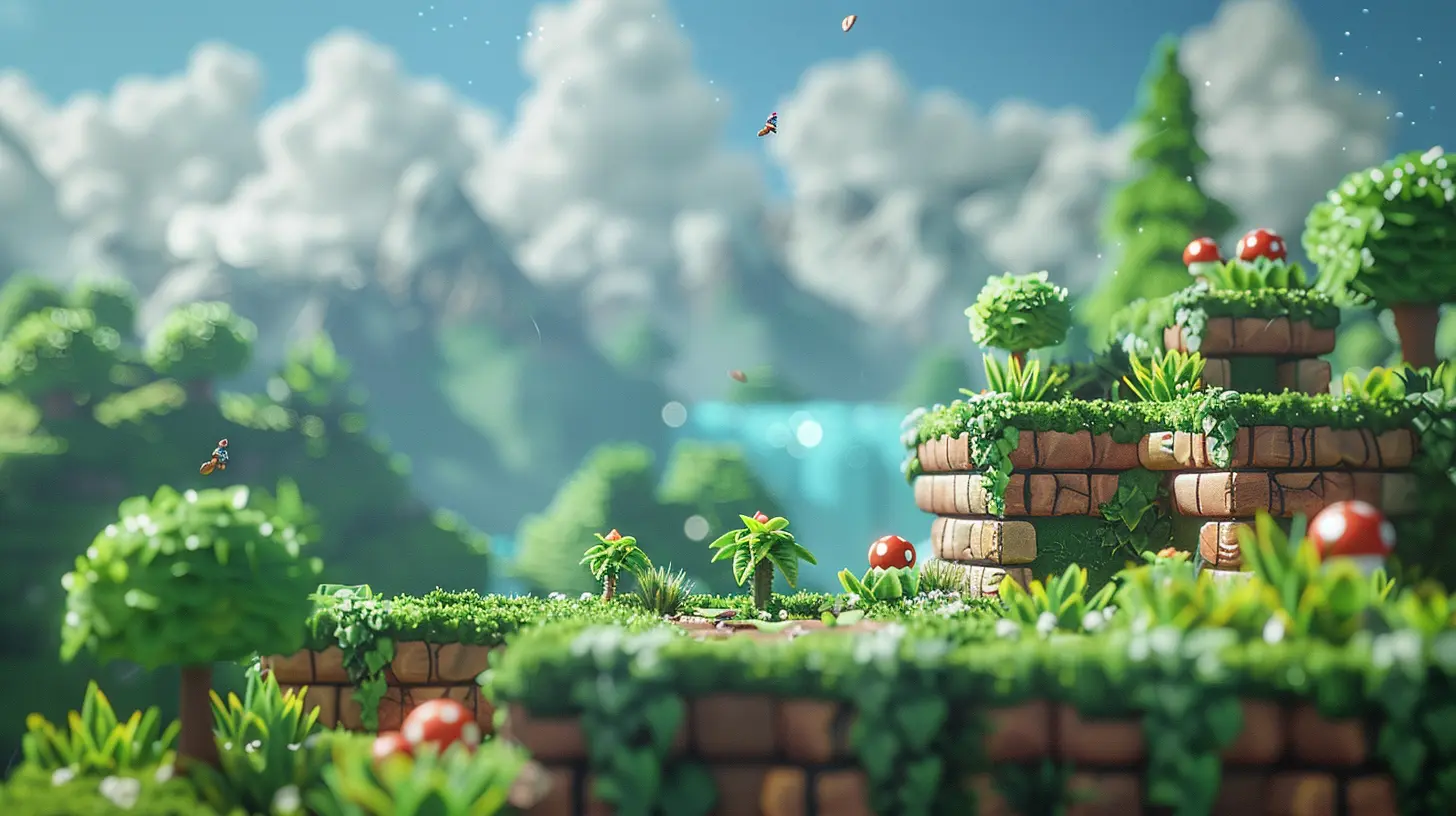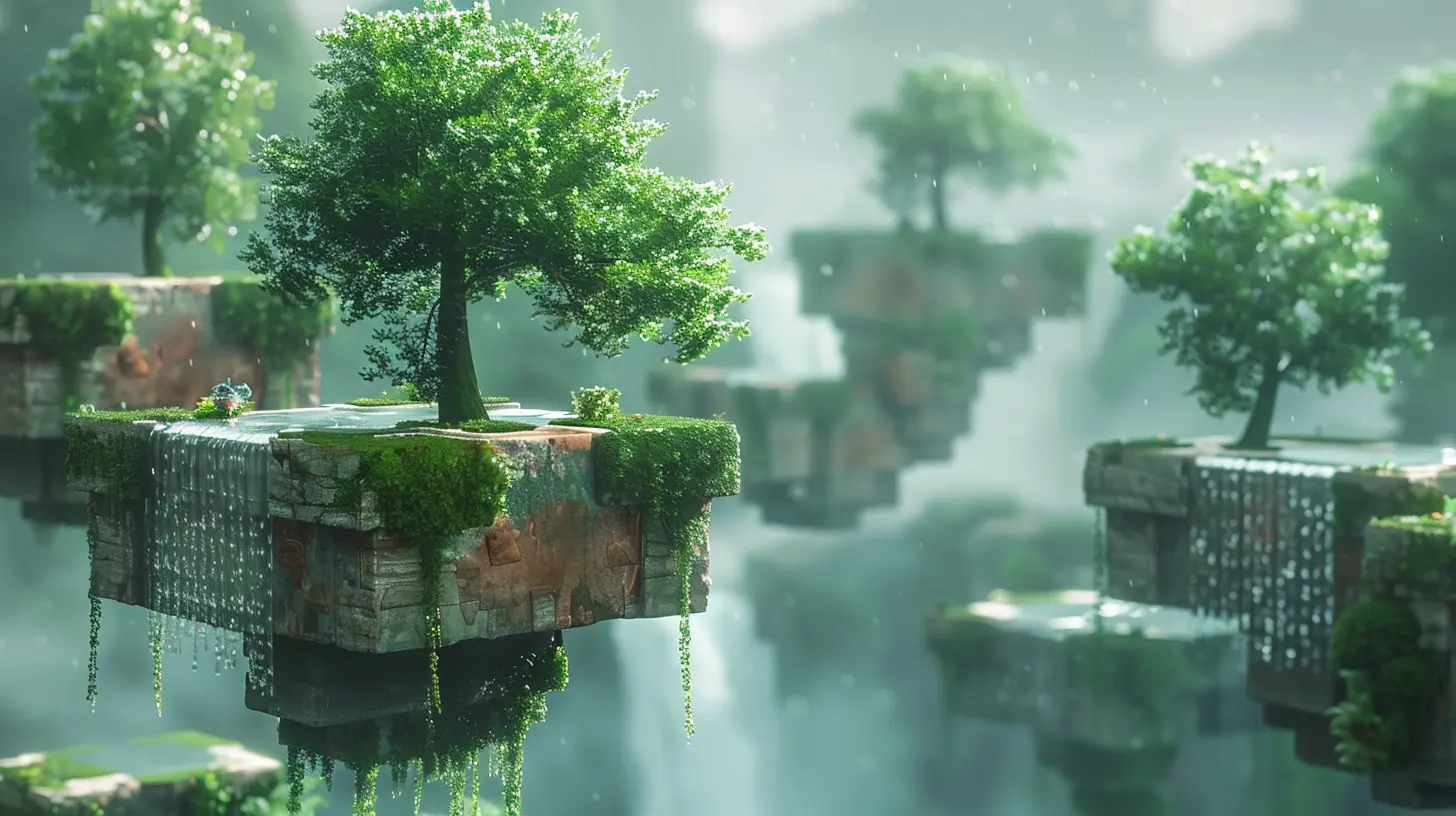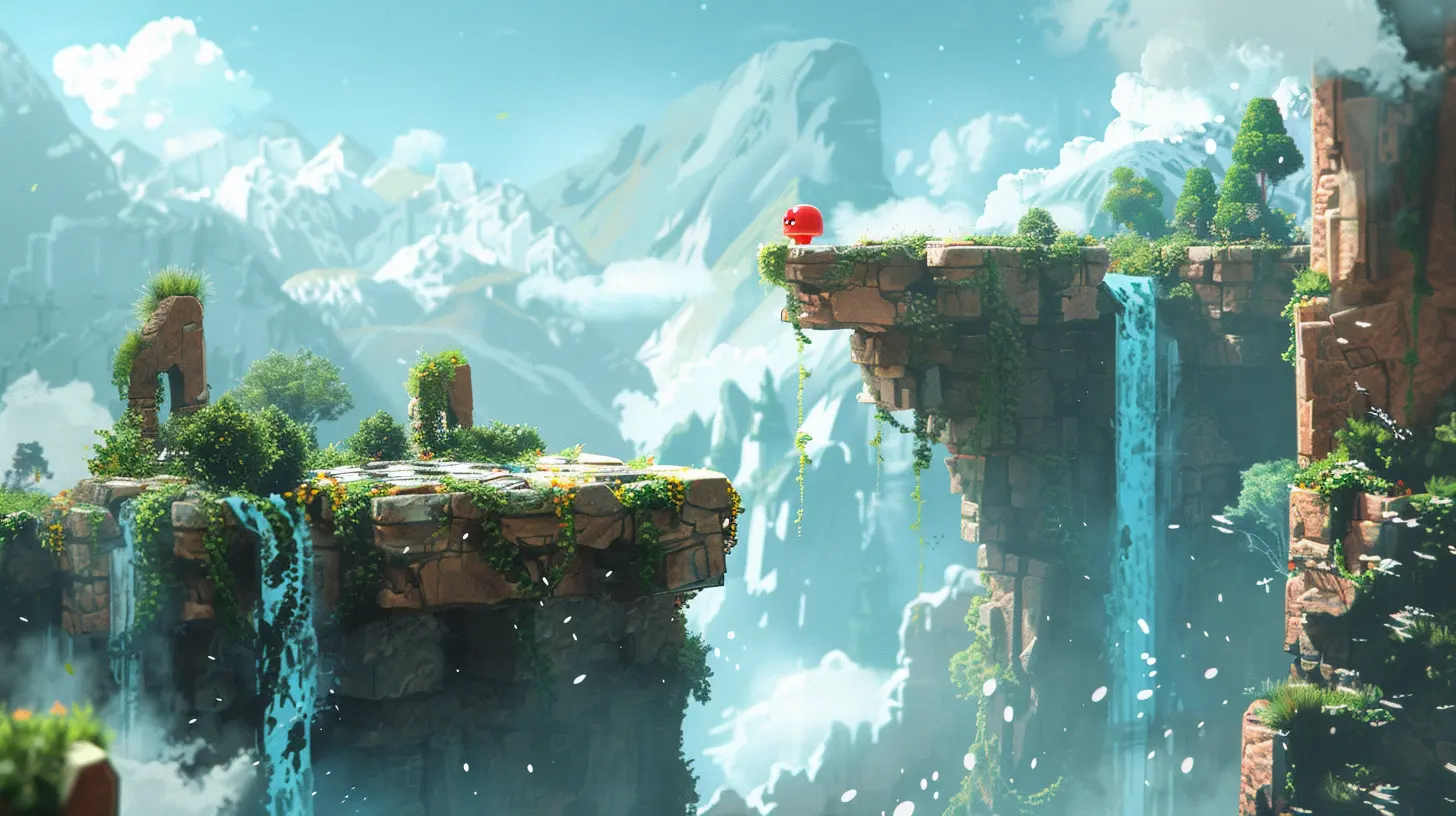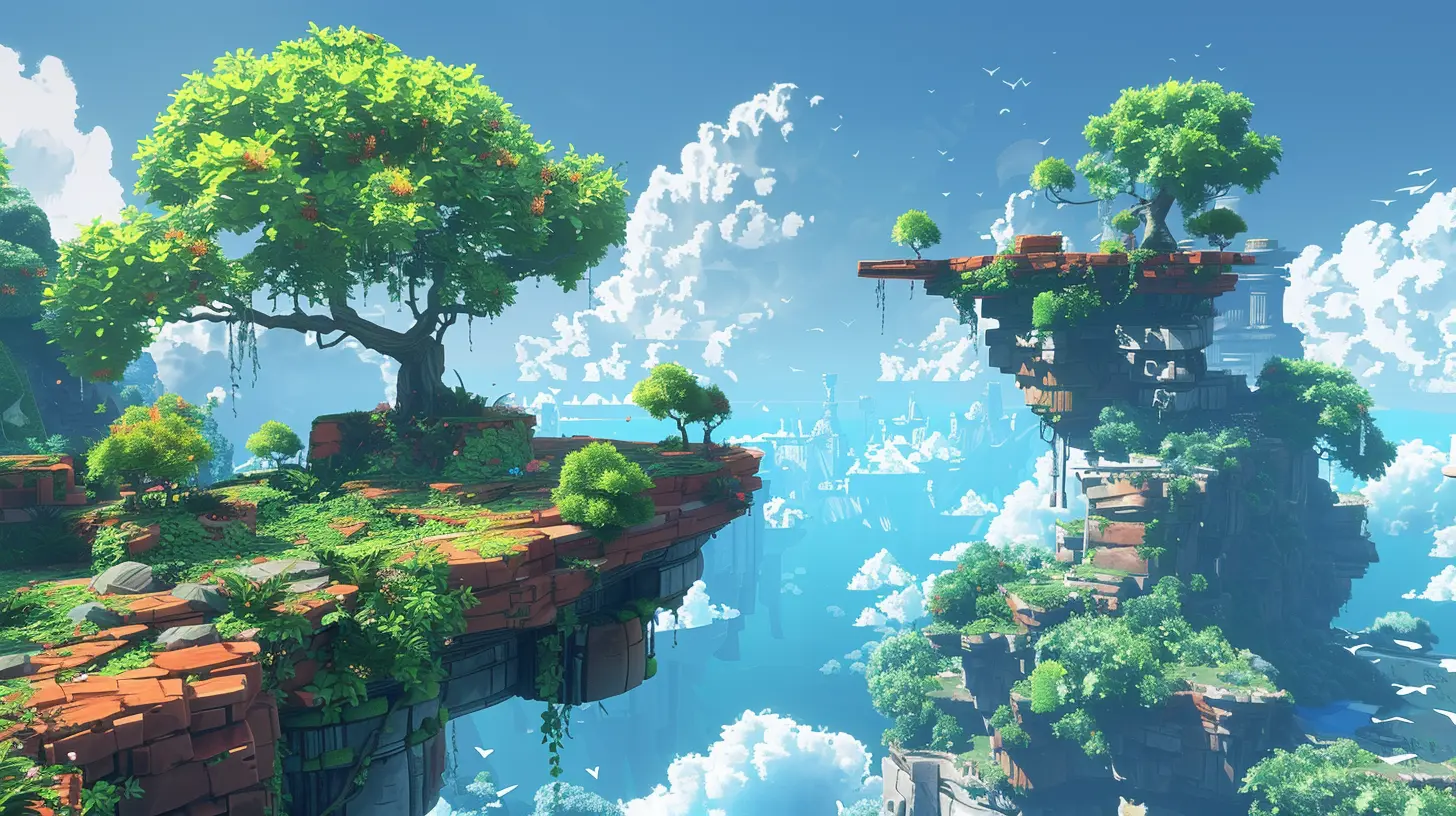The Physics of Platforming: Why Movement Feels So Good
4 May 2025
When was the last time you double-jumped onto a ledge or wall-ran across a gap in a video game, and it just felt... perfect? That moment when you landed cleanly after a long jump, and it felt like you, not the character on-screen, stuck the landing. It’s magical, right? But it’s not magic—it’s physics.
The best platforming games make their movement systems feel intuitive, natural, and oh-so-satisfying. Behind the scenes, there's an intricate dance of physics calculations, design choices, and game mechanics working together to make you feel like a parkour god. Let’s dive into what makes platforming movement feel so good and, dare I say, addictive.
Why Movement Matters in Platformers
First off, let's state the obvious: platformers are all about movement. Unlike other genres where the gameplay focus might lie in combat or storytelling, the core of platforming games is how you traverse the world. Whether you're leaping across pits in Super Mario Bros. or precisely dashing through hazards in Celeste, movement is the star of the show.Great platforming movement doesn’t just happen by accident. Developers meticulously craft these systems to ensure that every jump, sprint, and slide feels natural and rewarding. But why does movement matter so much? Because as players, we want agency. We want to feel like we’re in control, and when the movement feels fluid and responsive, it tricks our brains into thinking, “Yeah, I’m crushing this.”
The Role of Physics in Platforming
Physics is the unsung hero of platformer games. While you’re busy avoiding lava or timing jumps to dodge swinging blades, the game is running complex calculations to make sure everything feels just right. But what does that actually mean?1. Gravity and Weight Feels Real
Let’s talk gravity. Most platformers use a simplified version of gravity that’s a bit exaggerated compared to real life. For example, in Super Mario Bros., Mario falls faster than he jumps. Why? Because ensuring a quick descent feels more satisfying and gives you tighter control in mid-air.If characters floated down like balloons, the gameplay would feel sluggish and unresponsive, like trying to run in a pool. Developers tweak the in-game gravity to give each jump a specific weight, striking a perfect balance between realism and fun.
2. Momentum Makes Moves Meaningful
Ever notice how some games let you build speed as you move? That’s momentum in action. Momentum gives depth to a game’s controls, adding layers of strategy. Should you keep running for a longer jump, or slow down for precision?Games like Sonic the Hedgehog thrive on momentum. Increasing speed through slopes and loops creates an exhilarating sense of flow, and losing that momentum when you slow down feels like hitting a brick wall. It’s an intentional design choice—the game is nudging you to go fast the way Sonic was meant to.
Feel the Flow: The Illusion of Control
Here’s the secret sauce to what makes platforming feel so satisfying: the illusion of control. It's not about giving players total control, but making them feel like they’re always in charge—even when they’re not.1. Coyote Time: Grace Periods for the Perfect Jump
Ever jump off a ledge at what feels like the last possible moment and think, “Wow, nailed it!”? That’s coyote time in action.Named after Wile E. Coyote (because he always hangs in mid-air for a split second after running off a cliff), this design trick gives players a small window—typically a few frames—where they can still perform a jump even after technically leaving the platform.
Does it make any sense in the real world? Nope. Does it make you feel like a boss when you pull it off? Heck yes.
2. Variable Jump Heights: A Recipe for Freedom
In platformers, holding down the jump button usually makes you jump higher, while a quick tap lets you execute a smaller hop. It’s a subtle feature, but it works wonders for making movement feel responsive.By giving players control over the height of their jumps, game designers create freedom of expression. Want to barely clear a spike trap? Tap lightly. Want to leap to the heavens? Hold it down and go for gold.
This small mechanic puts YOU in the driver’s seat, which is where you—let’s face it—want to be.
When Frustration Becomes Fun: The Role of Challenge
Good platformers don’t just let you breeze through levels like a Sunday walk. They challenge you. But here’s the genius: the difficulty doesn’t feel unfair—it feels like a test of your skill.1. Trial and Error That Pays Off
Think about games like Celeste. That game is brutally hard, yet it’s one of the most beloved indie platformers of all time. Why? Because it nails the balance between frustration and reward.When you die (and you will die a lot), respawn times are instant, letting you jump right back into the action. Each attempt teaches you something new, whether it's timing, rhythm, or positioning. And when you finally stick the landing? Chef’s kiss.
2. Feedback Loops: The Sweet Sound of Success
Let’s not underestimate the power of feedback. A good platformer makes your successful actions feel downright euphoric. Whether it’s the way Mario's jump sound effect pops, or the sparkly animation when you collect a gem in Spyro the Dragon, these tiny details reinforce your sense of accomplishment.You’re not just surviving a level—you’re owning it. That’s the kind of positive reinforcement that keeps you coming back for more.
Animation and Aesthetics: The Unspoken MVPs
Physics and mechanics are crucial, but let’s not forget about the visuals. A game’s animation and aesthetics play a massive role in how movement feels.1. Squash and Stretch for Realism
Ever notice how characters in platformers squash down slightly before jumping or stretch at the peak of their leap? It’s a classic animation principle called squash-and-stretch. This little visual trick mimics real-world physics and makes the movement feel more lifelike, even if it’s totally cartoonish.In Hollow Knight, for instance, the Knight’s subtle squash before a jump gives their movement weight and gravitas. It’s like they’re planting their feet and really pushing off.
2. Smooth Transitions Keep It Fluid
Nobody likes clunky transitions. If a character stops too abruptly or changes animations awkwardly, it disrupts the flow and reminds you that you’re playing a game. Smooth transitions between running, jumping, and landing make the experience seamless—and that seamlessness is part of what makes platforming so satisfying.Why Platforming Feels So Rewarding
At the end of the day, the joy of platforming boils down to mastery. These games are designed to make you feel like you’re improving. The first few levels might be tough, but as you get better, you start flying through them with style. You feel in sync with the game’s rhythm.And that’s the beauty of platforming: it’s a perfect blend of art and science. Yes, physics plays a huge role, but so do level design, animation, feedback, and challenge. Together, they create an experience that's not just fun but deeply satisfying.
So the next time you’re speedrunning a level, nailing a tricky jump, or wall-bouncing your way to victory, take a moment to appreciate all the intricate details that made it possible. The physics of platforming isn't just about numbers and equations—it’s about creating moments that make you say, “Wow, that felt amazing.
all images in this post were generated using AI tools
Category:
Platformer GamesAuthor:

Tayla Warner
Discussion
rate this article
4 comments
Amalia Richardson
Ah yes, because flying through the air is totally realistic!
May 26, 2025 at 4:41 AM

Tayla Warner
While flying isn't realistic, understanding the physics behind platforming helps us appreciate the thrill and fluidity of movement in games!
Runehart Collins
Great insights! The seamless connection between character movement and physics truly enhances the platforming experience. It’s fascinating how these elements create such satisfying gameplay. Keep it up!
May 21, 2025 at 4:26 PM

Tayla Warner
Thank you! I'm glad you enjoyed the article and appreciate the connection between movement and physics in platforming!
Kane McKellar
This article beautifully explores the intricate relationship between physics and player movement in platforming games. The insights on how gravity, momentum, and responsive controls enhance the gameplay experience are spot on. It's fascinating to see how these mechanics impact our connection to the game world, making each leap feel satisfying and rewarding.
May 12, 2025 at 3:50 AM

Tayla Warner
Thank you for your thoughtful comment! I'm glad you enjoyed the exploration of physics and player movement—these elements truly elevate the platforming experience.
Corin Jones
Ah, the sweet science of platforming! It's like ballet with a side of gravity-defying spaghetti. Who knew jumping around could feel so good? If only my real-life physics worked as smoothly—I'd be leaping into the fridge for snacks instead of just thinking about it!
May 11, 2025 at 3:11 AM

Tayla Warner
Absolutely! The joy of platforming combines fluid movement with playful gravity, making every leap feel exhilarating. If only real life had such smooth mechanics—snack time would be a breeze!



